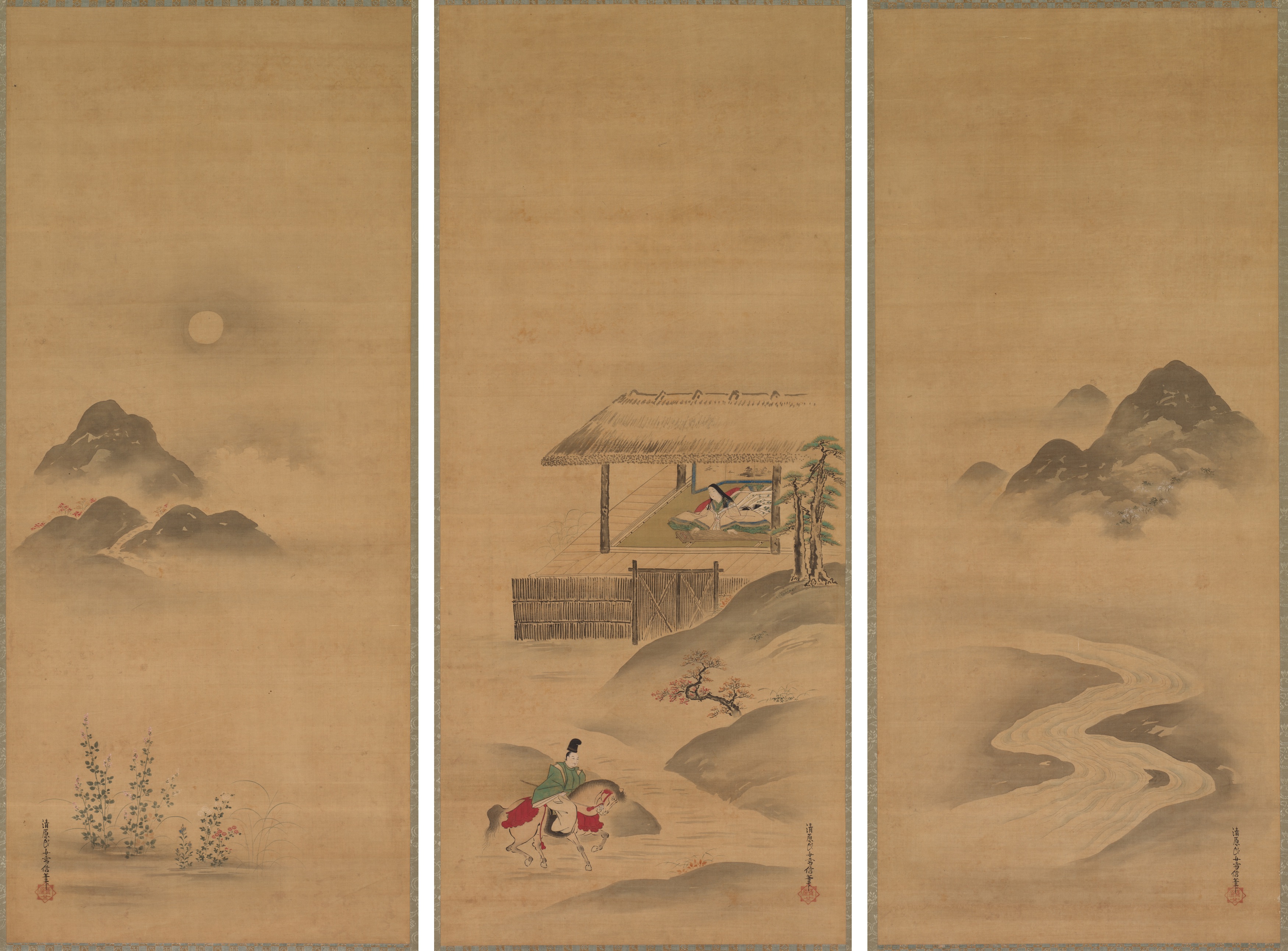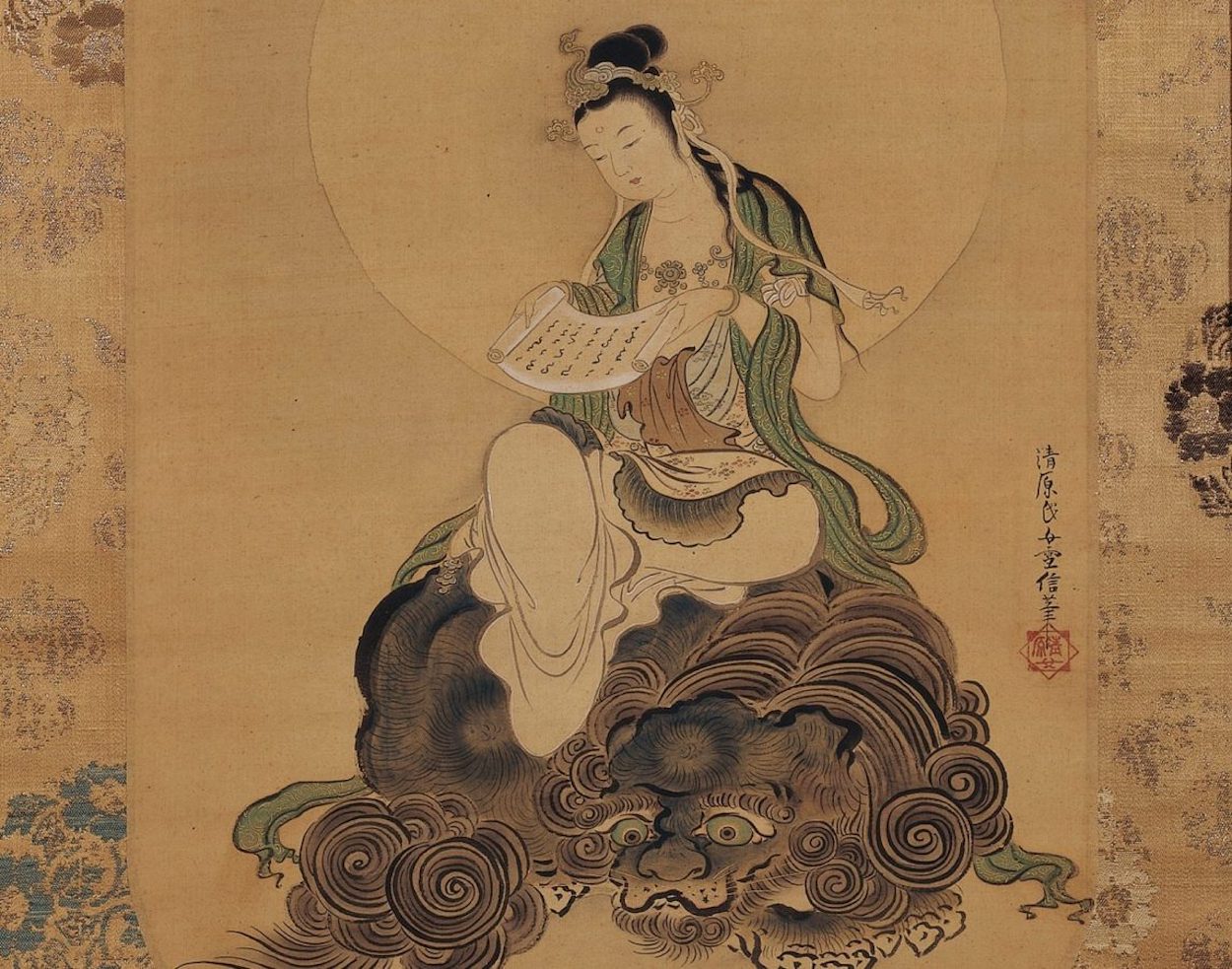Kiyohara Yukinobu (1643–1682) was a Japanese painter and one of the foremost women identified with the Kanō school. Her father, Kusumi Morikage, was also a painter and her mother, Kuniko, was the niece of his longtime teacher and patron Kanō Tan'yū. Yukinobu lived in Kyoto and likely studied under her father. Her work covered a wide variety of formats ranging from small scrolls to large screens.
Thematically she was skilled in the Yamato-e style (which is considered the classical Japanese style; its characteristic features include many small figures and careful depictions of details of buildings and other objects) but was also notable for producing many works depicting women including legendary figures such as Murasaki Shikibu. Because many of Yukinobu's works are signed and sealed with her name, it suggests she had achieved enough recognition to receive commissions from middle-class townspeople and samurai.
The scene is the illustration of the episode from The Tale of the Heike, which chronicles the conflict between the Taira (Heike) and Minamoto (Genji) families in the late 12th century. An aristocrat rides up a path to a residence where a woman plays a koto, a stringed instrument. The central composition is flanked on the right by a day-lit Spring scene, and on the left by a nocturnal Autumnal scene.
We present today's painting thanks to the Cleveland Museum of Art.:)
Have a great Sunday and Happy Women's History Month!
P.S. Here you can get to know more about Kiyohara Yukinobu, this sublime female painter of the Kano School. <3


 Kiyohara Yukinobu
Kiyohara Yukinobu